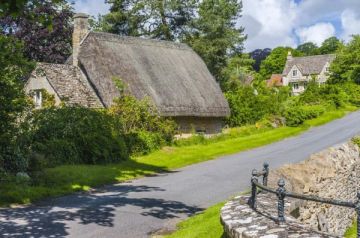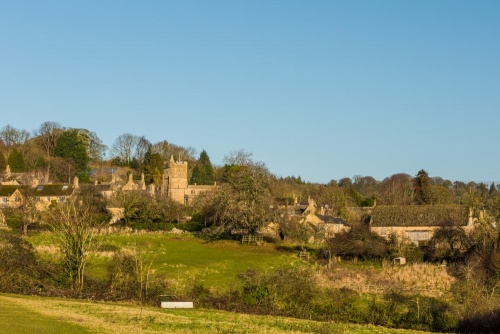
Bourton-on-the-Hill is a pretty village in the Gloucestershire Cotswolds two miles west of Moreton-in-Marsh. As the name suggests, the village is on a steep hill, in this case the eastern slope of the Cotswold escarpment. The suffix 'on-the-Hill' also helps distinguish it from the larger village of Bourton-on-the-Water about 10 miles to the south.
The village grew up along the London to Worcester road, which passed through the centre of the parish, with a manor house at each end and the parish church roughly halfway between them.
Most of the houses are built of locally quarried Cotswold stone, with its distinctive golden hue. Many of the buildings date to the 17th and 18th centuries, giving Bourton a very picturesque atmosphere.
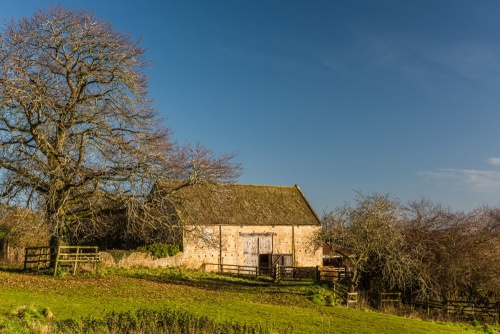
the edge of the village
Bourton House Gardens
At the eastern end of the village is Bourton House, one of the two manor houses mentioned above. The history of the house goes back to at least the 16th century when a member of the Palmer family rebuilt the existing medieval house on this site. The building we see today dates mainly to the Georgian period. but Within the grounds of Bourton House is a restored 16th-century tithe barn.
The house is privately owned and generally closed to the public, it stands in three acres of beautiful gardens that are open to view. There are formal garden areas defined by topiary hedges, a recreated knot garden, a fountain garden, colourful borders, and a potager garden.
Opposite the manor house is a seven-acre arboretum laid out in an informal style, with winding paths through stands of trees from across the globe, including Japanese Cherries, Scots Pine, and Sugar Maples.

St Lawrence Church
Facing onto Main Street about halfway up the hill is the medieval parish church, dedicated to St Lawrence. The oldest parts of the building date to the 12th century. In the south aisle is part of a 14th-century stone screen brought here from Moreton-in-Marsh.
There is an octagonal 15th-century font and several very good 18h-century memorials including a grey marble tablet to Kemp Harward, a 'Doctor in Physick' who died 1743. In the churchyard is a Grade II listed chest tomb dated 1855 to Rev Samuel Warneford, the rector of the parish and a well-known local philanthropist.
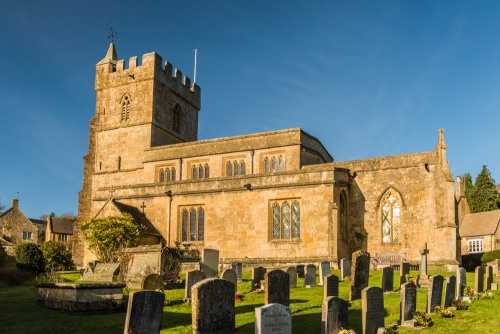
The village pub is the Horse and Groom, a traditional Cotswold pub situated at the upper end of the village. The pub is housed in a Grade II listed building dating to the 18th century.
Bourton-on-the-Hill is a multiple winner of the Best Kept Village in Gloucestershire award. Award-winnings have typically been used to repair the village water trough which is tucked against a stone wall behind the churchyard on Rectory Road.

Sezincote
On the outskirts of Bourton-on-the-Hill is Sezincote, one of the most remarkable stately homes in England. Sezincote was built in 1798 by Charles Cockerell, who had served with the East India Company in Bombay.
Cockerell was determined to recreate the opulence of a Rajasthan palace in the middle of the Cotswolds, and with the aid of his architect brother Samuel Pepys Cockerell, he built a stunning house in Moghul style, capped by a dome and minaret.
The house stands in a formal garden featuring a canal and a gently curving orangery. The result is quite extraordinary and unlike any other house in Britain. John Nash used Sezincote as the inspiration for his design of the Royal Pavilion in Brighton a few years later.
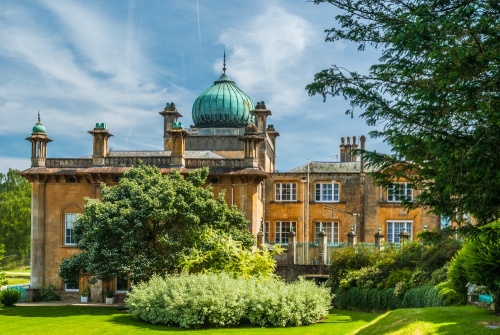
Batsford Arboretum
A few miles north of Bourton-on-the-Hill is Batsford Arboretum, the largest private collection of trees and shrubs in Britain. The arboretum was created by Algernon Bertram Freeman-Mitford (later to become the 1st Lord Redesdale), who inherited Batsford in 1886.
Freeman-Mitford had travelled widely in the Orient and he was determined to recreate some of the Oriental landscapes he saw on his travels. He created a striking mix of parkland and garden, with groups of plants in imitation of Chinese style.
There are over 3,000 labelled plants, trees, and shrubs at Batsford, among them mountain ash, magnolias, maple, Japanese Cherries, bamboos, and pine. The Arboretum is famous for its displays of lush autumn colours.
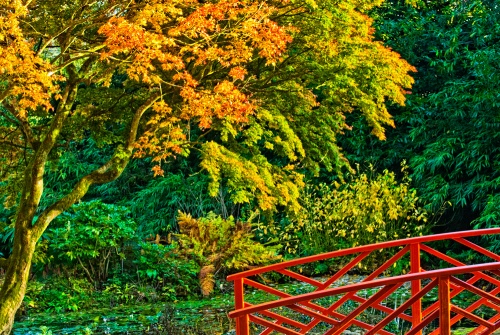
Getting There
Bourton-on-the-Hill is on the A44 two miles west of Moreton-in-Marsh. There is no dedicated village parking area but you can usually find parking along Main Street.
Our family has also enjoyed walking the Heart of England Way long-distance footpath from the neighbouring village of Longborough, to the south. The footpath crosses the Sezincote estate, giving excellent views of the mansion, before reaching Bourton-on-the-Hill.
About Bourton-on-the-Hill
Address: A44,
Bourton-on-the-Hill,
Gloucestershire,
England
Attraction Type: Village
Location: Two miles west of Moreton-in-Marsh on the A44
Location map
OS: SP174325
Photo Credit: David Ross and Britain Express
HERITAGE
 We've 'tagged' this attraction information to help you find related historic attractions and learn more about major time periods mentioned.
We've 'tagged' this attraction information to help you find related historic attractions and learn more about major time periods mentioned.
Find other attractions tagged with:
NEARBY HISTORIC ATTRACTIONS
Heritage Rated from 1- 5 (low to exceptional) on historic interest
Bourton House Garden - 0.1 miles (Garden) ![]()
Sezincote - 0.9 miles (Historic House) ![]()
Batsford Arboretum - 1.1 miles (Garden) ![]()
Batsford, St Mary's Church - 1.1 miles (Historic Church) ![]()
Longborough, St James - 1.8 miles (Historic Church) ![]()
Lower Lemington, St Leonard's Church - 3 miles (Historic Church) ![]()
Broadwell, St Paul's Church - 3.4 miles (Historic Church) ![]()
Four Shire Stone - 3.5 miles (Historic Building) ![]()



